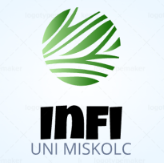This is an old revision of the document!
Table of Contents
Technical Communication (GEIAK100-B2A)
| Description | The main purpose of the course is to introduce students to the fundamental theories and methods of information systems. Topics include basic logic, number systems, systems theory, information representation, coding and encryption, semantics, modelling principles, and the fundamentals of computer-aided modelling. |
| Semester | Autumn, 2025 |
| Neptun code | GEIAK100-B2A |
| Instructors | Dr. Károly Nehéz, Associate Professor Áron Kiss, Teaching Assistant. |
| Credit Hours | 2 hours lecture + 2 hours practice per week |
| Attendance Requirement | Students are required to attend at least 60% of the scheduled classes to be eligible to receive the course signature. |
| Signature | Students must successfully complete two practical assignments and pass the midterm exam in order to obtain the course signature. |
| Examination | The written examination consists of theoretical questions and practical tasks based on the course material. |
Lecture Notes
Practices
- OnShape Sketching:
- OnShape Part Designing:
- Homework: OnShape - Part Design Using Part Studios
- OnShape Assemblies:
-
- Task: Construct the piston, connection, and handle parts, then assemble the machine!
- Homework: Onshape - Assemblies
Additional Notes
Examination Questions
1. The three types of sciences: inductive, deductive, and reductive. An overview of the scientific method.
2. The hierarchical levels of information, the concepts of sets and systems, the multi-level model of informational properties, and the concept of a signal and its basic types.
3. The quantitative properties of information, the concept of relative frequency, probabilities in finite event systems, Shannon's information-measuring function, the statistical properties of message sets, and the entropy and redundancy of a message set.
4. The syntactic properties of information. The concept of a code. Properties of different code types. Encoding messages, the Shannon-Fano procedure.
5. The concept of parity bit, Hamming distance, and correcting a 1-bit error in 16-bit data.
6. Other error detection and correction methods: the concept of a checksum. Elias block protection.
7. Checksum. The protection algorithm of bank card numbers and tax numbers.
8. Simple compression methods: RLE coding, LZW coding.
9. Character codes: ASCII codes, Unicode, UTF-8 encoding and decoding.
10. Demonstration of Base64 encoding and decoding.
11. Demonstration of JPEG and MPEG compression, including their key properties.
12. The syntax of languages: demonstration of Backus-Naur (BN) form, syntax graphs, JSON schema. The essence of XML and DTD.
13. Implementation of key exchange over an eavesdropped channel.
14. The essence of RSA encryption.
15. Hash codes and their properties, password storage.
16. Digital signatures with and without hash codes.
